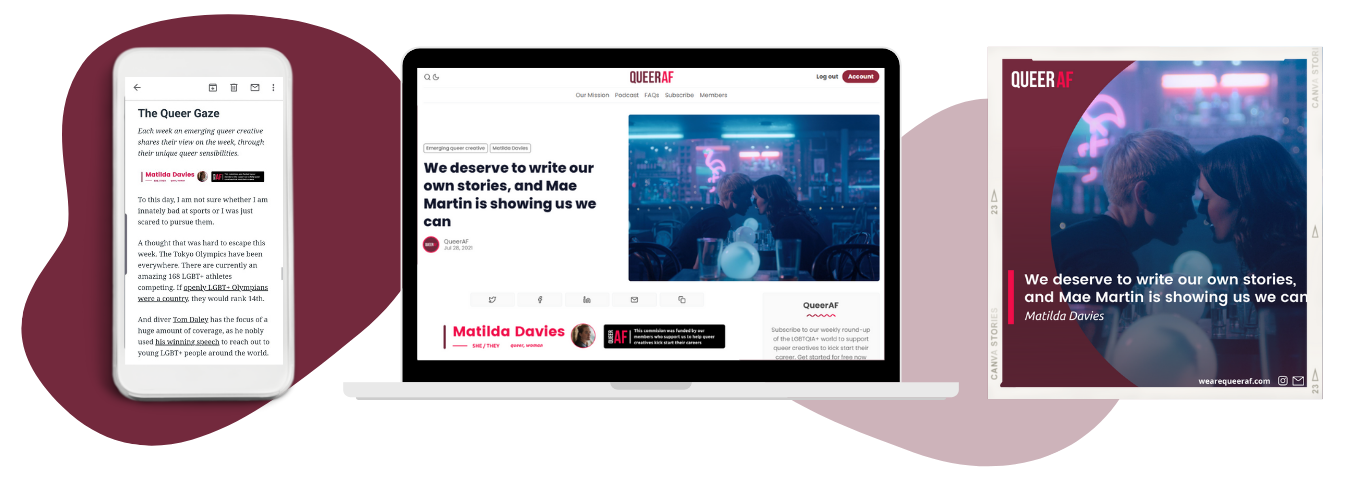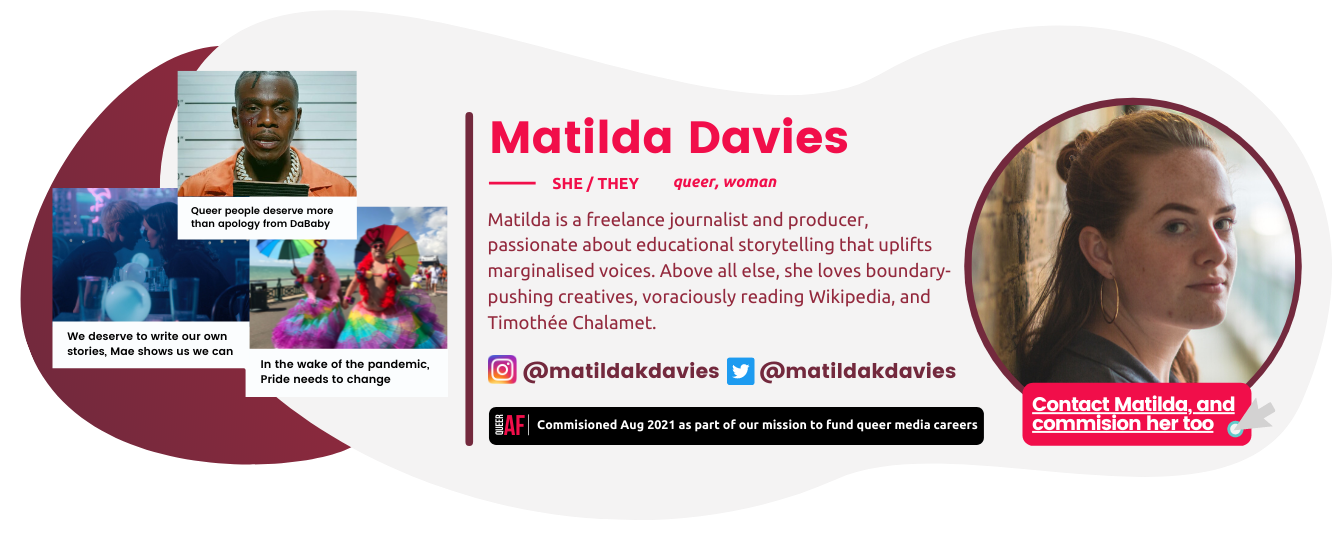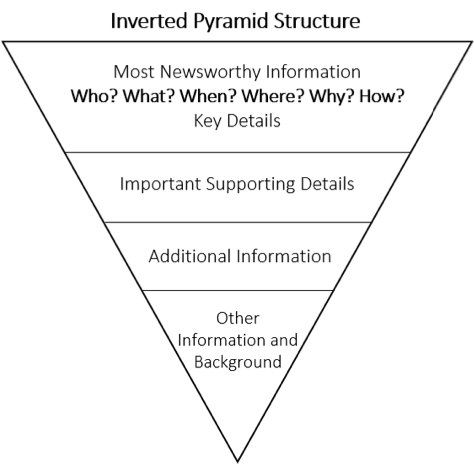‘The Queer Gaze’ is a space in our newsletter to commission emerging and underrepresented queer creatives so you can get published, receive mentorship and ultimately, kickstart and build your writing career.

The brief
The Queer Gaze gives readers eye-opening insight into the experiences and viewpoints in our community they may not have encountered before.
Afterwards, our audience feels intrigued, introduced to new perspectives and inspired to read more.
Our newsletter is primarily about what happened in the last week. So our features bounce off something current to hook the reader.
It could be something you’ve seen on social media, a recent experience you've had or a story in the news.
This feature is about your perspective, so the topic you pick will be strongest if it's based on your experiences and viewpoint.
Choose something you feel comfortable with, and can own.
The format
A think piece aims to be thought-provoking and speculative. It consists chiefly of background material, analysis and some opinion.
Your feature will be a ‘think-piece'. It's a piece of journalism, and the tone and style should reflect that. Try to avoid academic and blog styles. Journalistic tone sits somewhere in the middle of these two.
The word count is around 400 words, though your first draft can be a little longer (max 500).
Why so short? Good question. It sits in a newsletter that's around 3000 words.
It's a hefty amount to read - so your piece needs to be concise, to the point and focused on the 'why' of the story. You can use links to explain the 'what' of the story.
Most people scan online text, and although many topics require in-depth features, we're focused on introducing people to concepts.
We're a launchpad for more knowledge.
Here is our typical format to get you started:
Opening (20-50 words)
Sum up your experience and perspective. Hook the reader and make them want to keep reading. (You might want to write this last)
Hook (50 words)
Why is this relevant? Briefly outline the social media conversation, experience or news story you’re bouncing off of to give the reader context. Include links to the original story or source.
Why did it matter to you? (100-150 words)
What did the social media post/experience/news story make you feel? What previous experiences did it bring up for you? What did it make you think about? Why did it matter to you?
Why does it matter to the community? (100-150 words)
What did it make you feel about the broader LGBTQIA+ community? What needs to change? What should we be talking about? What might the reader not have thought about before? Model the change: share your experiences, ones that show the change is doable and happening.
Closer (20-50 words)
Finish with one or two sentences that will really hit the reader and leave them thinking. It should sum up your point, and be the one line the reader will copy and paste into a Tweet about your piece.
Write a headline first
There are two different schools of thought on this. But given the format, we say - have a go at writing your headline first.
What you write, likely won't be your final headline, and it doesn't have to be.
But if you can summarise in a headline what you're going to say - then your piece will have a clear sense of direction.
It's also much more complicated to retrofit an article's headline.
Give it a go - at first don't worry about clicks, SEO or making it pop. We can help with that. It's just important you have a clear direction for your article at the pitch stage, and this will demonstrate that.
Your headline should tell someone what your piece is about, why they should read it, and crucially - what they'll understand after.
You should be able to answer this. It might help you write your initial headline too.
You could also start by thinking about what one word or phrase is your main keyword. This is important for SEO and helps anchor your piece too.
Be prepared to answer questions about this at your retrospective.
Links
Our newsletter is all about showcasing the queer world to our readers.
We ask you to link to at least three sources (more if possible) that have different vibes and backgrounds.
News is fine to use as one or two of your links, but another journalist’s already filtered it. It's always great to include some previous links to other QueerAF articles too.
If you can, try to use primary sources like social posts (Tweets, TikToks, YouTube videos, Instagram posts), organisation blogs and websites, or educational resources.
That way, we read your gaze on the world – not someone else’s.
Help getting started
If you don’t have lots of writing experience, don’t worry - that’s why we’re here. We'll guide you from pitch to piece.
Here are our top tips for writing this feature.
- Try to keep your sentences short, concise and under 25 words - here’s why
- Try writing the main body of the piece first, and come back to the opener and closer last
- All of our advice is just that; feel free to interpret the info on this page in a way that works for you. They're more like guidelines anyway...
- If you’re struggling to get going, remember this is about your perspective. Think about starting with:
I saw/experienced… It made me think/do/feel...
I often feel/think/hear...
It reminded me of when…
Start with why
When you know why something is happening, your limbic brain (the bit that processes your emotional responses) gets very excited.
It drives action. Purpose. Understanding.
That's what we're trying to do with the queer gaze. Knowing what, awareness, it isn't enough. We need to move people.
It doesn't matter what you do, it matters WHY you do it. Those who have had the greatest influence in the world all think, act, and communicate similarly - and it's the opposite to most. How you lead, inspire, live, it all starts with why
- Simon Sinek, Start With Why author
What to think about
Think about your boundaries:
- Would you be comfortable sharing this story with a stranger?
- We don’t need to share all the details for our story to be powerful.
- Could you make a similar impact by explaining the broader perspective – the world the story plays out in, and the bigger issues involved?
Think about your audience:
- Your readers will, largely, also be queer. They will understand some of your sensibilities through their own experiences.
- The queer community is also broad and has lots of different perspectives. How can you invite people in to understand your gaze?
Think about buzzwords:
- Are the words you’re using open for interpretation?
- Will everyone understand these words?
- Don’t be afraid to define exactly what you mean
- Almost never use an acronym (definitely not without explaining it)

Using the news pyramid
Writing a piece of journalism is different to most other forms of writing.
Stories tend to have a 'beginning, middle and end' and follow a linear structure. However, a piece of journalism flips this upside down.
In a news story, that means we use an 'inverted Pyramid Structure' where the important summary happens first, with more details later.

This feature is a think piece, so doesn't have to follow this pyramid exactly – but it's a useful guide.
However, you need to tell your readers what they'll take away (at the start) so they know what they're about to read.
Your structure should:
- Tell people what you're about to tell them
- Tell people what you're telling them
- Tell people what you just told them
The details
- For this commission, we will pay you £50 - this is designed to cover around four hours of work. If you spend much more than that on the article, you should ask for help.
- The word count is for around 400 words on your chosen topic. If you need more words for your first draft - that's fine; we'll help you cut it down. Many people send a draft of around 500 words.
- Every QueerAF commission comes with our unique 'retro' sub-editing session. It's around 30 minutes long and is designed to empower writers to be in control of their work and improve their craft. You'll prepare your first draft before this session, so we can discuss it - but you can ask for help at any point of the process.
- It's best to send over the first draft as a Google Doc if you can.
- Your piece will be featured in the newsletter, with a bio introducing you to the community and directing them to your social media or website so they can follow you (or so other editors can commission you, too!)
- Your feature will also be hosted on our website, so you can send links to potential employers or share them with your friends and followers. If you use Instagram, we can do a collab carousel version with you there, too, if you like.
- Contributors who submit to QueerAF agree to follow our contributor guidelines and the Impress standards code
- Once you’ve been commissioned, come back here and fill out this form to tell us what to include in your bio box.
Who should apply?
This scheme is designed for early talent, emerging and unpublished journalists and creatives. The biggest value we offer is the training and support, and the fee we provide is to cover your time.
We work with all queer creatives, but our focus and priority for this feature are working with underrepresented, marginalised and/or emerging creatives.
This is an evolving definition guided by our members. This non-exhaustive list includes some of the intersectionalities we're interested in hearing pitches from:
Lesbian, Bi+, pansexual, Romantic orientations, Trans, Non-binary, Marginalised genders, Queer, Low-income backgrounds, Migrant backgrounds, Disabled, Neurodivergent, Black, Asian and Racialised communities.
Pitch here
If you haven't yet, have a good read about the format on this page, and look at some previous examples.
Then when you're ready - tell us what you would write, if you were writing the feature this week.
This pitch form lets us get to know you and see whether you've understood the feature. It might not be what you end up writing about as we're often booked up many weeks ahead.
After you've completed this short form, we'll contact you to let you know if you've been successful and what upcoming week you'll be able to write for us.
We may ask you for additional ideas at this stage that are more topical, depending on how timely your initial idea is.
PS. Do you read our newsletter?
If not. Now is a great time to start...

